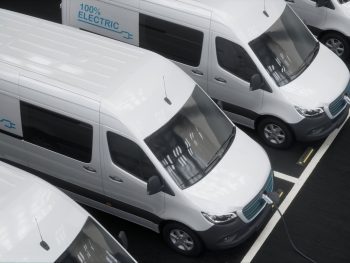By Mike Nakrani, CEO at e-fleet solutions provider VEV.

The transition to EVs is revolutionising the fleet management industry. While EVs offer numerous advantages, including lower operating costs and reduced environmental impact, managing their residual value presents a unique challenge. One of the key reasons for this is that an EV’s value is intrinsically linked to the health of its battery – a vital, yet complex component.
Current industry reports suggest that lithium-ion batteries degrade at a rate of around 2.3% each year, meaning that over a 20-year period (or 200,000 miles), an EV’s battery could potentially degrade by around 46%. The battery’s state of health (SoH), or its ability to hold a charge, is a critical factor. Brand new batteries have a 100% SoH, but when an EV battery falls to 70% SoH, it’s considered to have reached the end of its useful life. An EV’s battery is by far the most expensive part of the vehicle, and so the ability to reduce the degradation of its SoH across all vehicles in a fleet directly affects the business’s bottom line.
Repeated fast charging, consistently charging to 100%, and regularly allowing the battery to completely discharge can all contribute to accelerated battery degradation. Instead, aim for regular, low-rate charging (such as overnight with a 7kW home charger) and keep the battery operating within the recommended 20%-80% range. Fleet managers should also adhere to the vehicle supplier’s guidance for optimal driving practices and avoid extreme temperatures where possible, as these can also reduce the SoH. Installing good habits in your drivers, like asking them to park in the shade on hot days or under cover during freezing conditions, can all contribute to prolonging the life of the battery.
Another useful tip is to establish a comprehensive system for documenting all service records, ensuring transparency and instilling confidence in potential buyers. VEV’s fleet management dashboard, VEV-IQ, enables fleet managers to automatically track vehicle performance, energy usage, and charging behaviours, ensuring the fleet operates at maximum efficiency.

Implementing mileage management strategies can further extend the service life of your EVs and maximise their residual value. Consider rotating vehicles within the fleet or utilising telematics solutions to optimise routes and minimise unnecessary driving. By actively managing mileage, you can keep your EVs in top condition for longer.
There’s reason for optimism regarding EV battery longevity. While most EV manufacturers expect batteries to last between 10 and 15 years, advances in technology suggest that the latest batteries have the potential to last much longer, especially if they’re larger in size. In April, Tesla released its latest Impact Report, announcing that battery degradation in its Model S and Model X vehicles is only 12% after 200,000 miles.
Additionally, the cost of EV batteries is decreasing rapidly – according to the Department of Energy, the cost of an EV battery in 2022 was $153/kWh, 90% lower than in 2008. As batteries become more affordable to manufacture, companies will develop larger batteries that last longer and as lithium-ion technology improves, degradation rates will become slower, further improving EV battery lifespans.
EVs come with robust warranties anyway, which reduces the risk of large costs should a replacement battery be required. However, by following best practices for battery maintenance, mileage management, and leveraging data-driven insights, fleet managers can ensure their EVs retain maximum value throughout their service life. Optimising residual value not only protects your investment but also positions fleets for long-term sustainability and profitability.

